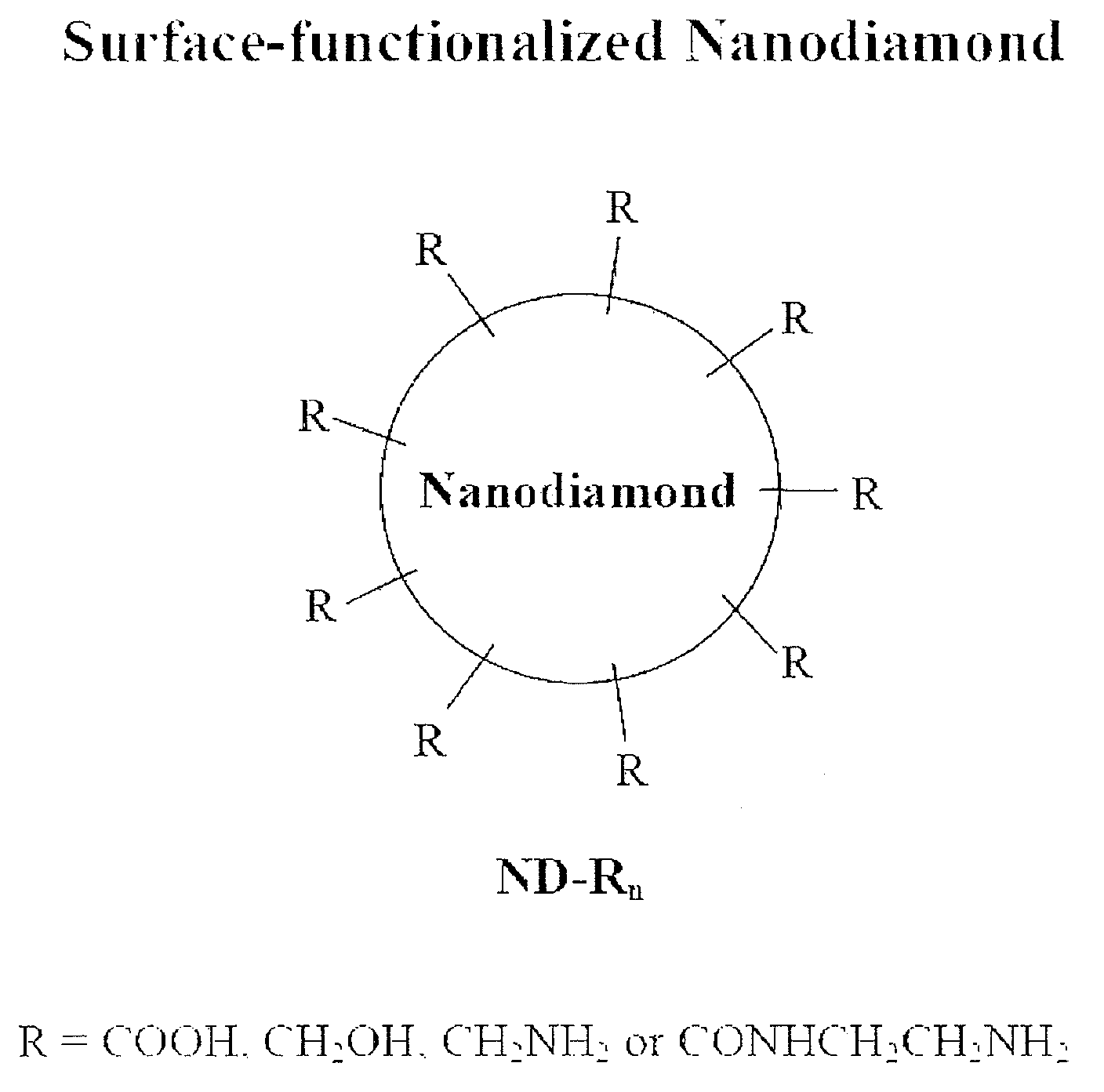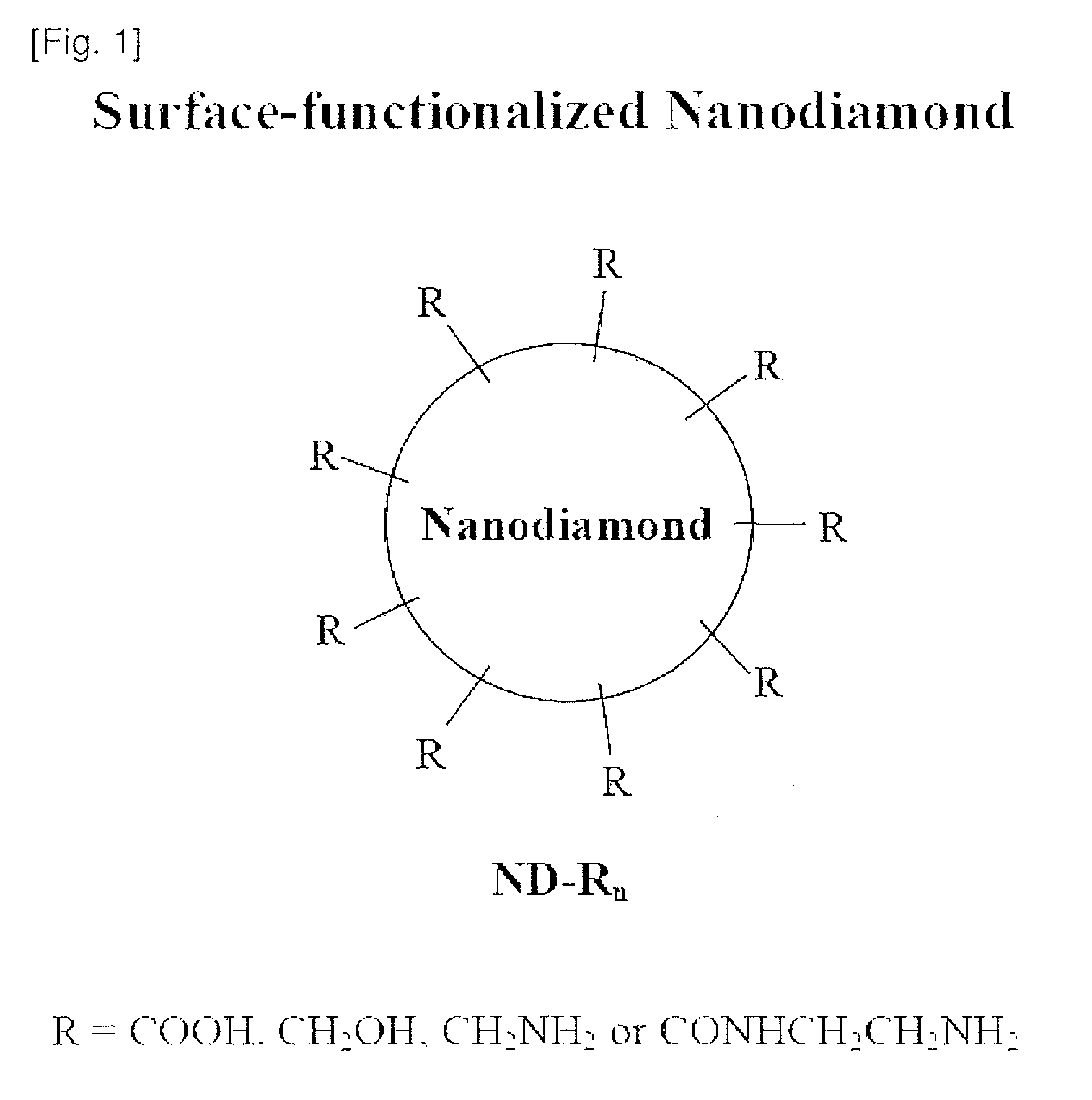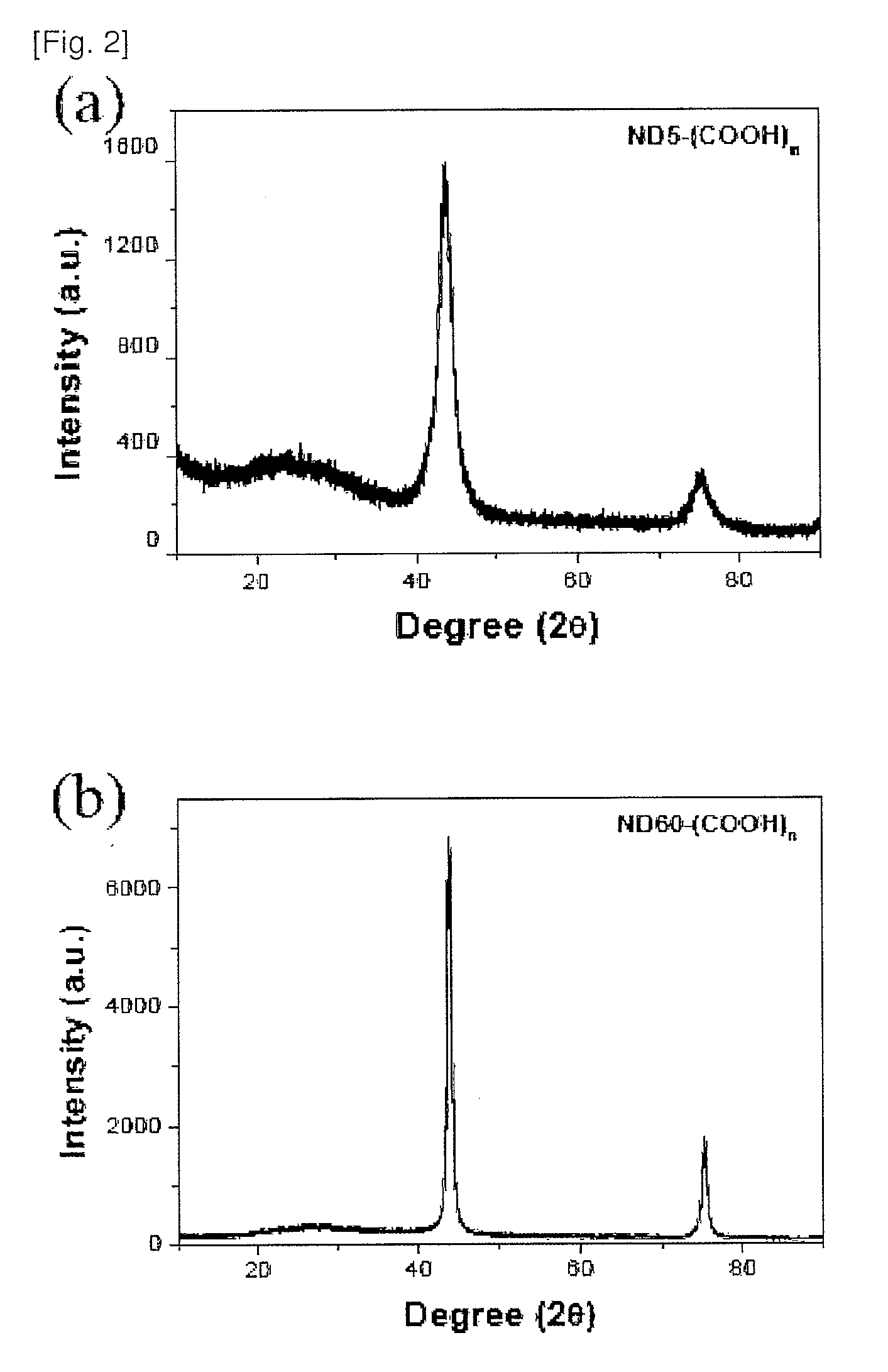Nanodiamond compounds synthesized by surface functionalization
a technology of surface functionalization and nanodiamonds, which is applied in the preparation of amino compounds, carboxylic compounds, and compound preparations, etc., can solve the problems of high cost, complicated processing steps, and inapplicability to mass production, and achieve the effect of increasing solubility
- Summary
- Abstract
- Description
- Claims
- Application Information
AI Technical Summary
Benefits of technology
Problems solved by technology
Method used
Image
Examples
example 1
[0053]ND5 nanodiamond powder is added to a strong acid solution containing HNO3 (70%) and H2SO4 (98%) in a mixing ratio of 1:3 to introduce carboxyl groups to the surface of the ND. Next, the resultant solution is sonicated for three hours in a sonication bath (Model 2510, available from Branson). The solution is heated in a water bath at 90° C. while agitating it for ten hours. Then, the heated solution is poured gradually into distilled water, agitated thoroughly, and filtered through a membrane filter. The resultant product is dried in an oven at 80° C. for four hours to obtain ND5-(COOH)n powder.
[0054]The same process for introducing carboxyl groups to ND5 as described above is repeated by using ND60 to obtain ND60-(COOH)n compound.
example 2
[0055]The same process as described in Example 1 is repeated, except that the starting ND powder is milled before treating it with the strong acid. The ND powder may be milled by a wet milling process using zirconium beads with a size of 10-100 μm.
example 3
[0056]In this example, alcohol groups (OH) are introduced to the surface of ND5. First, 100 mg of the ND5-(COOH)n compound is added to 30 mL of anhydrous tetrahydrofuran (THF), and sonication is carried out for one hour. Next, 10 mg of lithium aluminum hydride is added to the resultant THF solution, and sonication is carried out for one hour. Then, 300 mL of methanol is gradually added to the resultant solution, followed by filtration. The filtered product is dried in an oven at 80° C. for three hours to obtain powder of ND5-(CH2OH)n compound.
PUM
| Property | Measurement | Unit |
|---|---|---|
| Temperature | aaaaa | aaaaa |
| Temperature | aaaaa | aaaaa |
| Time | aaaaa | aaaaa |
Abstract
Description
Claims
Application Information
 Login to View More
Login to View More - R&D
- Intellectual Property
- Life Sciences
- Materials
- Tech Scout
- Unparalleled Data Quality
- Higher Quality Content
- 60% Fewer Hallucinations
Browse by: Latest US Patents, China's latest patents, Technical Efficacy Thesaurus, Application Domain, Technology Topic, Popular Technical Reports.
© 2025 PatSnap. All rights reserved.Legal|Privacy policy|Modern Slavery Act Transparency Statement|Sitemap|About US| Contact US: help@patsnap.com



